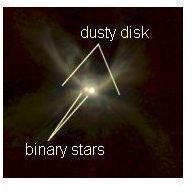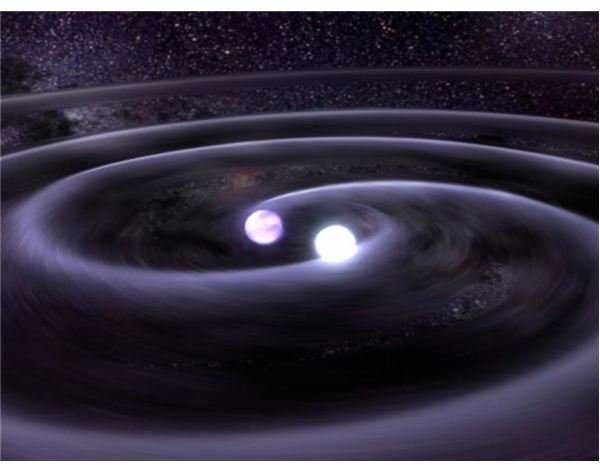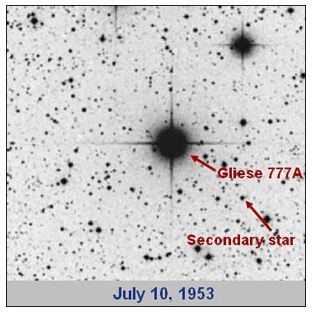Binary Stars: What They Are, How They Form, and How They Are Detected
How Binary Stars Form
Typical binary systems have been together for the entirety of the individual star’s existence, their protostars forming out of the same molecular cloud. This will often form multi-body systems, which are inherently highly unstable, often resulting in some stars either being destroyed by collisions or ejected from the system until a stable two-body binary system is formed. It is only quite rarely that a multistar system forms by gravitational capture, that is, by one or more stars capturing another by their sheer gravitational influence, though it is possible.
As these stars evolve, they and their atmospheres change in size, shrinking and expanding according to their path along stellar evolution. This change in the Roche Lobe (the region around a star in which material is gravitationally bound to the star) results in many fascinating interaction effects between the two parts of the binary system. The two stars are not necessarily on the same stage of stellar evolution, as they have started out with different masses, and may engage in mass transfer with their partner over the course of their lifetime to further complicate stellar evolution.
There are a number of ways to classify binary stars:

Detection
The means by which we detect binary systems is often used to classify them::
Visual binaries are those binaries that are detected optically, that is, by literally, physically tracing their orbits in the sky. Those stars that are visual binaries tend to be those that are either closer to us, or have very long orbital period and are those far away from each other. As telescopes become more and more powerful, chances are, we’ll be detecting many more binary systems in this manner.
Of course, there are those stars that appear to be binary stars from here on Earth due to their seeming close proximity, but in fact are quite far away from each other and have no physical relation. These are known as double stars or optical double stars. Careful observation allows astronomers to distinguish these from true binaries, either by using parallax to see whether these stars are at a comparable distance away from Earth, or by watching for other telltale signs of binary systems.
Eclipsing binaries are those that appear to eclipse each other over the course of their orbit. These stars may be photometric binaries, which we detect from changes in brightness, for instance, as the dimmer star eclipses the bright star and lowers the apparent magnitude of the system, or as the brighter star is alongside the dimmer star and increases the apparent magnitude of the system. They may also be spectroscopic binaries, which are detected in a similar method except with changes to the spectroscopic signature of the system. Such changes are often due to a cyclic Doppler Effect, each star redshifting and blueshifting relative to each other over the course of their orbit.
A fourth method is that of astrometry, rendering astrometric binaries. In this method, you detect the existence of the smaller, unseen companion stars by cyclical changes to the position of the primary star that match orbital dynamics. This may again be done via the Doppler Effect, or visually. Either way, Kepler’s Laws of orbital motion are called in to calculate the orbital characteristics.
It is often quite difficult, if not outright impossible, to detect the angle at which the system’s orbit is inclined towards us, as well as other mechanical features of the system, so in most cases we do not have a complete picture of the orbital dynamics.


Configuration
Another way to classify binary stars: their configuration.
Detached binaries are those binary systems where each star exists entirely within its own Roche Lobe, that is, where the gravitational pull of each star on itself is more than that of the other star. So, there is no transfer of mass between the stars, and they progress through stellar evolution independently of each other. This is the majority of binary systems.
Semidetached binaries are pretty much what they sound like. One star manages to remain outside of the Roche Lobe of the other, but the other star is within that star’s Roche Lobe. This inequality results in accretion of matter from the less massive star onto the more massive one., and is the mechanism by which many stellar fireworks begin. For instance, it is by this that the Chandrasekhar Limit of white dwarfs in binary systems is exceeded, triggering a type 1a supernova. Cataclysmic variable stars are another example, as the infall of matter from the accretion disk causes spikes in absolute magnitude. X-ray binaries are formed when matter falls into either a neutron star or a black hole, releasing gravitational potential energy and causing the superheated gas to emit x-ray radiation.
Contact binaries are those binary systems where their Roche Lobes overlap, and there is a common envelope surrounding them both. They both have substantial gravitational influence on each other, resulting in complex tidal forces that act as friction on the orbital motion of the two stars, in some cases resulting in their merger.
